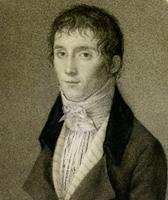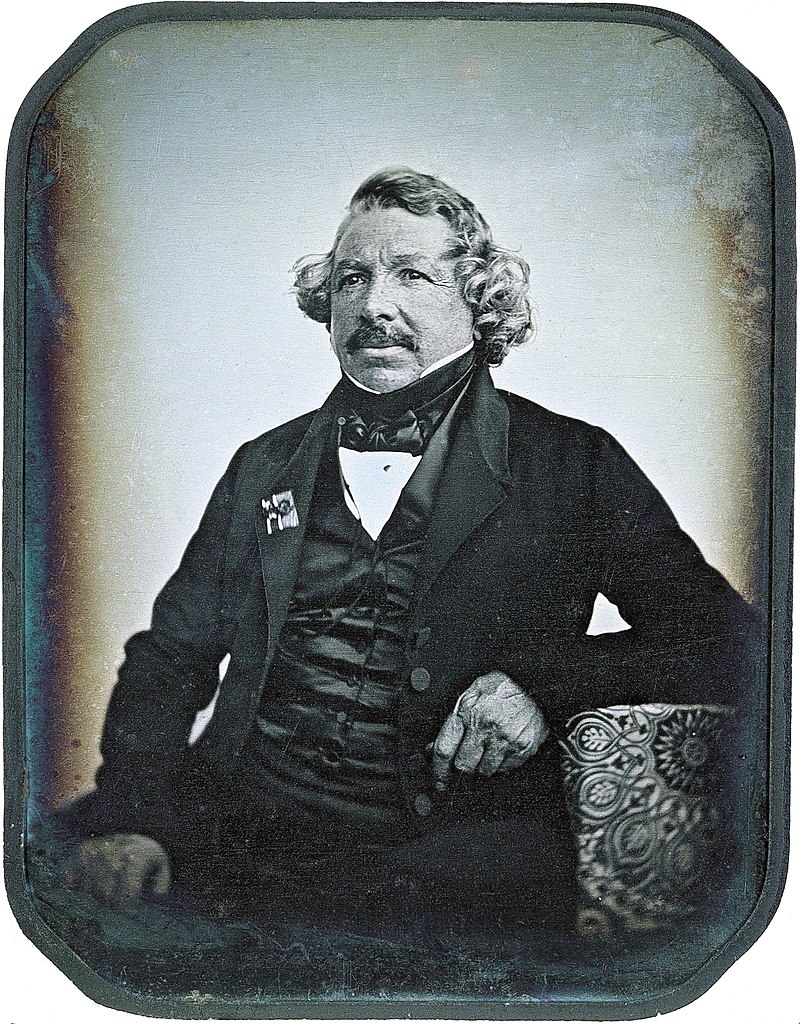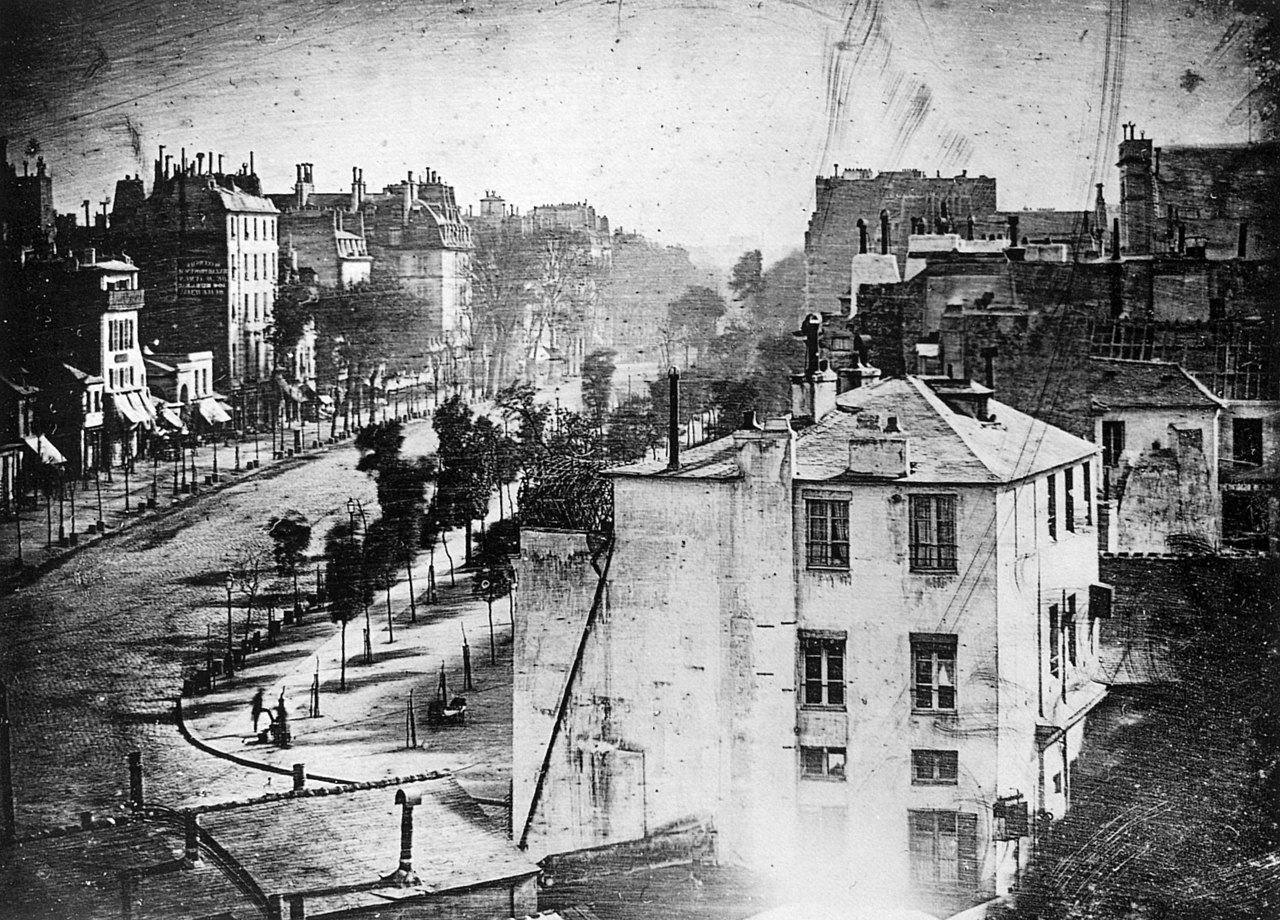If we look up when photography was invented, we usually get 1839 as the official date, making photography 178 years old. However, it is also a known fact that the oldest photograph in existence dates to 1826, making photography actually 191 years old. Is there an explanation for this discrepancy?
The answer is “sort of”. Even though this is not directly related to Leica, I think it is still worth looking into because without the invention of photography as it actually happened, there might be no Leica cameras.
 Joseph Nicéphore Niépce
Joseph Nicéphore Niépce
The history of photography would be incomplete without mentioning Joseph Nicéphore Niépce. He must be credited with having produced the oldest surviving photograph in 1826. He had experimented with heliography, as he called it, for quite some time and finally succeeded to produce a photograph that would not fade after just a very short time.
From a letter to his sister in 1816, he talked about having succeeded in producing recognizable photographs on paper coated with silver chloride. However, he had no means to fix the images, keeping them from turning black after only a short while. So he looked for other means to achieve his goal. That led him to use Bitumen of Judea, a naturally occurring asphalt that had been used for various purposes since ancient times.
He had some early successes with this process making contact prints, usually of drawings. But soon he would begin to use a camera obscura, a device used extensively to make very accurate drawings of scenes which were displayed by a lens in the camera on a ground glass. Niépce correctly assumed that it should be possible to capture these images on sensitized pieces of paper.
He had noticed that a thin layer of bitumen of Judea would harden when exposed to light for a period of time. Then, after the exposure, he would use lavender oil, a solvent, to wash away the less hardened areas.

In 1822, he used it to create what is believed to have been the world’s first permanent photographic image, a contact print of an engraving of Pope Pius VII, but it was later destroyed when Niépce attempted to make additional prints from it. The earliest surviving photographic artifact by Niépce, made in 1825, is a copy of a 17th-century engraving of a man with a horse. It is an ink-on-paper print, but the printing plate used to make it was photographically created by Niépce's heliography process.
From a letter to his brother Claude we know that his earliest success using a camera obscura apparently was in 1824. Most of the time he tried to photograph the scene outside his window. It is not known what happened to these photographs, the earliest surviving photograph from these experiments dates to 1826. It is now the oldest known camera photograph still in existence. The historic image had seemingly been lost early in the 20th century, but photography historian Helmut Gernsheim succeeded in tracking it down in 1952. The exposure time required to make it is said to have been eight or nine hours. That photograph is now in a museum at the University of Texas.

Niépce photograph from 1826, the oldest surviving photograph
Obviously an exposure time of eight hours is not very practical, to say the least. That problem was partially solved by Louis Jacques-Mandé Daguerre. He operated several theaters in Paris with rather elaborate stage scenes which he used to introduce the impression of movement by moving various theatrical stage paintings which were produced with the help of a camera obscura. Daguerre had begun to think of directly producing these via a photographic process.
 Louis Jacques-Mandé Daguerre
Louis Jacques-Mandé Daguerre
The largest lens maker at that time was the house of Chevalier in Paris. Niépce had contacted them in the past, looking for faster lenses for his camera obscura to gain shorter exposure times. Daguerre obtained his lenses from them as well, and they introduced him to Niépce.
The two decided to collaborate with the purpose of developing a more practical photographic process.
Further experiments showed that Niépce’s process was most likely a dead end, and they decided to look for different means to produce photographs by going back to plates sensitized with silver halides, a process Niépce had experimented with in the past . Unfortunately Niépce died in 1833, but Daguerre continued the research which resulted in the so-called Daguerreotype process which was officially introduced in 1839.
The process required a sheet of silver plated copper to be polished to a mirror like finish which would then be treated in darkness with halogen fumes to make it light sensitive. After exposure in a camera obscura, the plates were developed by exposure to mercury fumes. After development, the plates were fixed by removing the remaining silver halides with a mild solution of sodium thiosulfate. Depending on the level of illumination, this process rendered exposure times as fast as just a few seconds; definitely an improvement.

Still life with plaster casts, made by Daguerre in 1837, the earliest reliably dated daguerreotype

The earliest reliably dated photograph of people, taken byDaguerre one spring morning in 1838 from the window of the Diorama, where he lived and worked. It bears the caption huit heure du matin (8 a.m.). Though it shows the busy Boulevard du Temple, the long exposure time (about ten or twelve minutes) meant that moving traffic cannot be seen; however, the bootblack and his customer at lower left remained still long enough to be distinctly visible.
However, the Daguerreotype still had one considerable draw back. It was a direct process which would only render one photograph at a time which brings us to Henry Fox Talbot of Dorset in the United Kingdom. He is generally credited with inventing the negative process, not unlike what film photography still uses today.
 Henry Fox Talbot
Henry Fox Talbot
Talbot's early "salted paper" or "photogenic drawing" process used writing paper bathed in a weak solution of ordinary table salt (sodium chloride), dried, then brushed on one side with a strong solution of silver nitrate, which created a coating of very light-sensitive silver chloride that darkened where it was exposed to light.

A positive from what may be the oldest existing camera negative
This process was developed by Talbot virtually parallel to the Daguerreotype process of Daguerre. However, Talbot was very secretive. He did not want anyone else to know about it for fear of others using his process to their advantage. It is most likely because of this fear that Daguerre was able to introduce his photographic process prior to Talbot.
The rest is history, as they say. All three of these individuals, however, deserve equal credit for the invention of photography. It is quite astonishing that even now, 191 years later, we essentially use a very similar process. We still use a camera to expose a light sensitive medium, film or electronic sensor, to produce photographic images. Thank you Joseph Nicéphore Niépce, Louis Jacques-Mandé Daguerre and Henry Fox Talbot.
For other articles on this blog scroll down in the column to the right to BLOG ARCHIVE
To comment or to read comments please scroll past the ads below.
All ads present items of interest to Leica owners.
___________________________________________________________________________
To comment or to read comments please scroll past the ads below.
All ads present items of interest to Leica owners.
___________________________________________________________________________
Buy vintage Leica cameras from
America's premier Leica specialist
Buy vintage Leica cameras from
America's premier Leica specialist
Click on image to enlarge
Order: info@gmpphoto.com
Click on image to enlarge
Order: info@gmpphoto.com
Click on image to enlarge
Order: info@gmpphoto.com
Click on image to enlarge
Order: info@gmpphoto.com
Please make payment via PayPal to GMP Photography
Click on image to enlarge
Order: info@gmpphoto.com
Please make payment via PayPal to GMP Photography
Click on image to enlarge
Order: info@gmpphoto.com
Please make payment via PayPal to GMP Photography















No comments:
Post a Comment